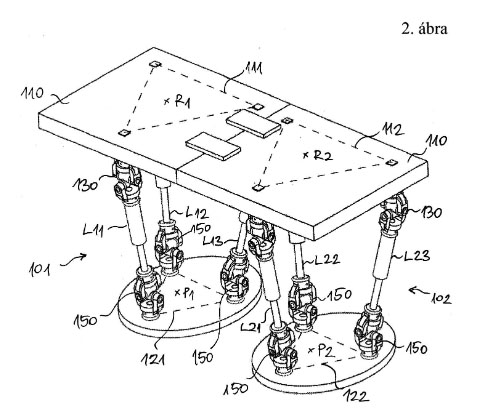
Representative No: P1600241
Type of IP: Patent
Industry: robotics
Outline
The aim of the invention is to provide the stepper mechanism of human-shaped, so-called humanoid robots with a simpler structure, but at the same time with a cheaper, more stable stepping structure which is more suitable for overcoming obstacles. In the stepping device subject matter of the invention, parallel robots are used which have three robot arms. The stepping device for a humanoid robot, being the subject matter of the invention, comprises at least two robot legs (101, 102), each robot leg (101, 102) comprising three robot arms (Lll-13) connected in parallel, wherein the robot arms (Lll-13) at their upper ends are connected to a rigid base plate (110) and at the lower ends to a rigid mobile base plate. The upper ends of the robot arms (L11-13; L21-23) of each robot leg (101, 102) are located at the vertices of a base triangle (111, 112) of any shape, where the vertices of each base triangle (111, 112) point to mobile connectors located on the rigid stabile base plate. The lower ends of the robot arms (L11-13; L21-23) of each robot leg (101, 102) are located at the vertices of a moving triangle (121, 122) of any shape, where the vertices of each moving triangle (121, 122) point to mobile connectors located on a mobile rigid base plate. The robot arms (Lll-13; L21-23) associated with a robot leg (101, 102) together provide at least three degrees of freedom of movement for that robot leg (101, 102). Each robot arm (L11-13; L21-23) is provided with at least one uniaxial drive, preferably a servomotor and associated drive mechanisms. The base plates (110) of the robot legs (101, 102) are connected to each other.
